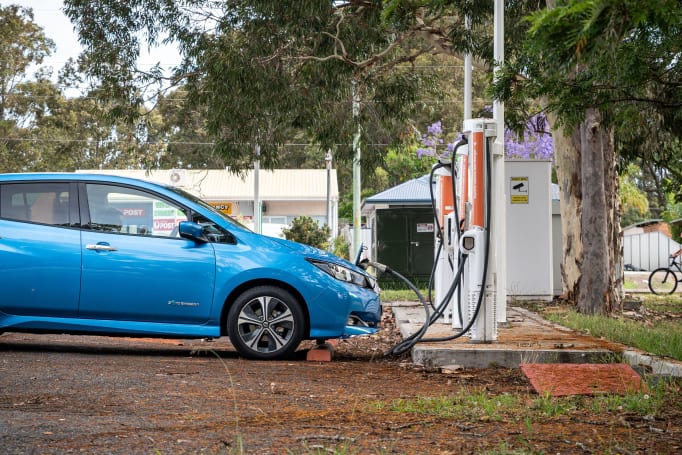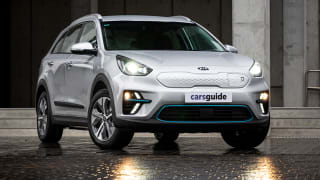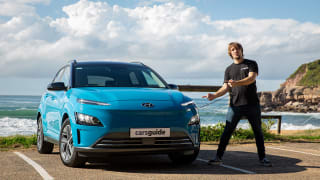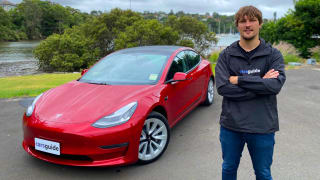Let’s talk about this specific car quickly. This is the latest version of the Nissan Leaf, the e+. Slotting into the range above the base-model Leaf, the main upgrade in the e+ is a much larger battery pack allowing for a significant increase in range between charges.
The base Leaf only offers 270km of range, less than I would normally consider enough for Australian commuters, and for the record this is the car I originally wanted to long-term test to really see if that miniscule range would, in reality, be okay.
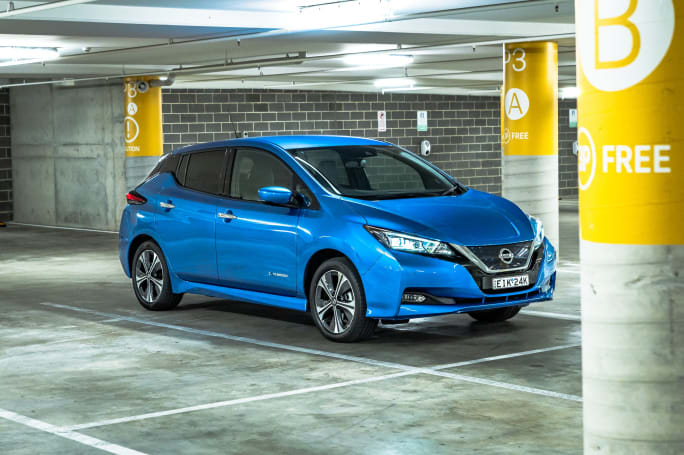
My colleagues in Melbourne beat me to it, so go read their 2020 long-term base model Leaf test here.
If you thought the roughly $50K asking price for the base Leaf was a tall order, though, this new version with its claimed 385km driving range ups that by more than $10K, with a total before-on-road asking price of a painful $60,490.
If we’re on the topic of hatchbacks generally, that’s seriously fast hot hatch money, but in its EV niche the Leaf e+ competes with rivals like the Hyundai Kona electric (484km range - $62,000), Kia Niro EV S (451km range - $67,490), Tesla Model 3 Standard Range Plus (420km range - $59,900), and the frankly bizarre Mazda MX-30 (224km range - $65,490).
It’s not a great start for our little Nissan hatch. While it’s the only hatchback in this company, the Kona and Model 3 in particular offer stellar range and superior cabin tech at this price point.
In an attempt to sweeten the deal a little, the e+ also has a more powerful motor, producing 160kW/340Nm allowing for a somewhat impressive 0-100km/h sprint time of 6.9 seconds, and also has improvements on the charging front to go with its larger battery. More on that later.
To set the scene for this test you should know a few things about how I intend to use the car. Firstly, I live in a unit complex built some time in the ‘70s or ‘80s, so I have a single car space with no power outlets nearby, leaving me with no way of charging it at home.
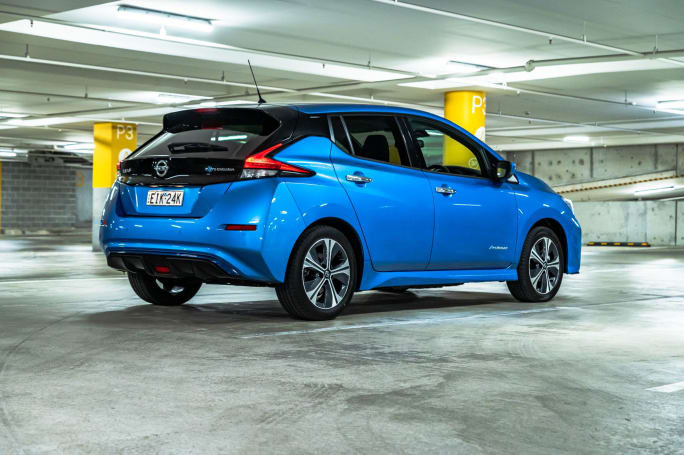
Secondly, just two weeks into my testing, Sydney went into a strict pandemic-related lockdown, so I’ve fallen short of the usually 1000km per-month benchmark I like to hit for solid testing.
I was hoping to bring you a few inter-city drives as the range in this car allows, but it looks like it will be a while before we’ll be able to do that.
Still, it’s been convenient to hop into a long termer as my ‘daily’ as our usual stream of test vehicles has ground more-or-less to a halt.
So, despite a lower than usual distance travelled, I feel as though I’ve been able to get to know the Leaf quite well.
In my commutes I’ve found this car to be particularly quiet and comfortable, and its certainly the right size for me and my partner.
The seats deserve a special mention. While you don’t sit as low in them as I would like for a hatch (to facilitate the underfloor battery storage) they’re trimmed in a nice thick synthetic leather material and padded generously enough that you simply sink into them.
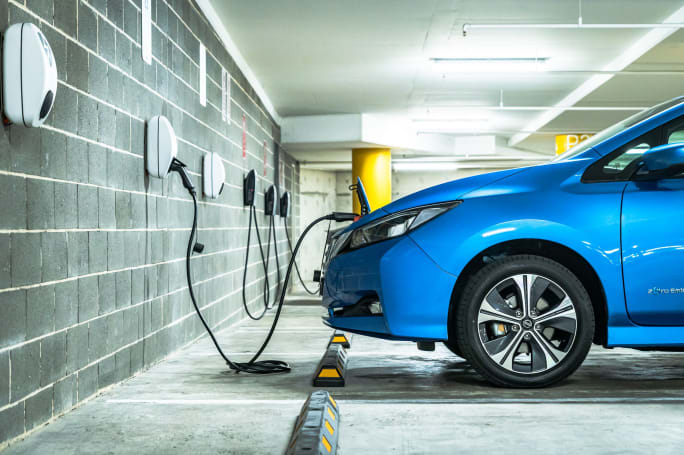
The trim continues to the doors and armrest console to make the Leaf a cozy place to sit in.
I also appreciated the heated seats for the winter months, and keyless entry combined with large door apertures makes the cabin easy to access even in tighter parking spots.
My initial impression of the cabin reveals some downsides though. There’s not really enough storage. You get two large cupholders, a small armrest console, some pockets in the doors, and that’s it.
There’s an odd little phone-shaped cubby under the climate controls, but it’s only good for a single phone, and it seems like a missed opportunity to not put a wireless charger there.
So, while the cabin is comfy, it’s missing some of those EV benefits rivals take advantage of like extruded storage space under the centre stack where combustion drive components would usually be.
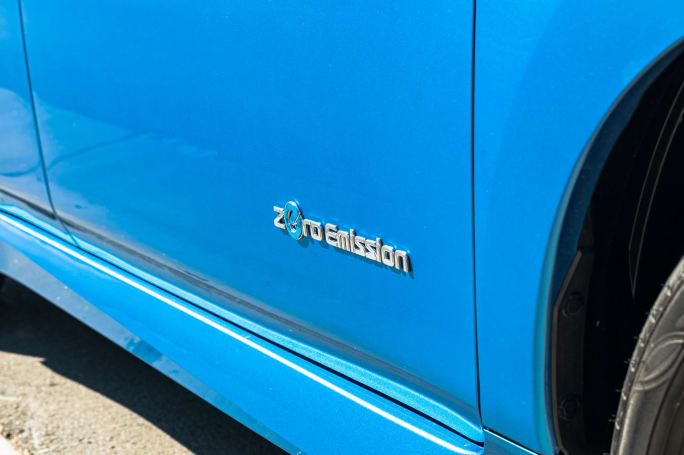
Driving is also an easy experience. I’ll talk more about this in later instalments, but I do like the Leaf's no-nonsense feel behind the wheel, with a single regen braking ‘e-Pedal’ mode making it efficient and smooth for short-distance commutes.
It’s lacking in some areas to do with feedback, and the interactivity of the cabin does feel a bit old-school and dare I say, budget-focused, compared to rivals.
I bet the burning question you have is how do I charge it. With no way of topping up at home, surely, I’m going to have problems, right?
In reality though, this is a very good story. When I first tested a pre-launch Leaf in 2019, I struggled to find places to charge it.
The amount of infrastructure which has rolled out in the three years since then is staggering. In my locale of Northern Sydney, many council parking areas have at least some form of charging station, with my closest one having four spaces with solar-charged 7.4kW AC units.
Solar charged means free, apparently, so I can comfortably drive my Leaf all week, park it up at this local charger and restore roughly 135km of range in my three-hour free parking time with a running cost of precisely zero dollars.
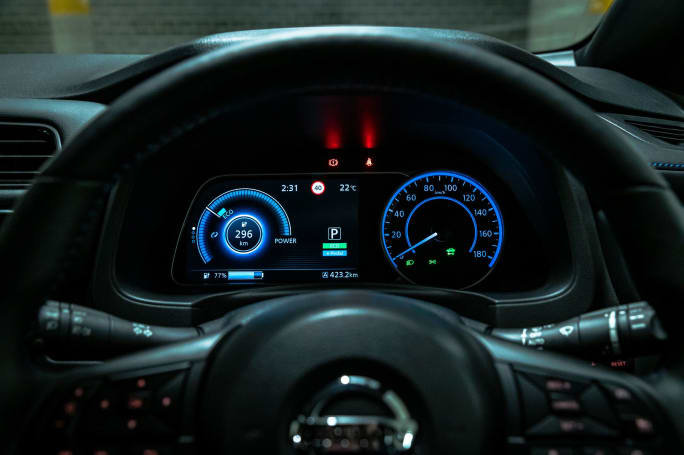
In reality I charge up while I do a grocery shop once or twice a week, restoring between 50 and 70km each time, breaking roughly even on range.
Getting lazy in the second half of the month though, meant I let the charge drop to 20 per cent, at which point I commuted to the nearest 50kW DC charger (which, at the time was within my legally allowed lockdown radius) and was able to restore the Leaf to 80 per cent in about 60 minutes, enough time to grab some local pastries and go for a walk.
In total, my charging cost for the month was $12.30 from that single high-speed session. Can’t say it would have been the same for a combustion vehicle...
In terms of efficiency for my first month, I scored 16.4kWh/100km which is better than the official/combined claim of 18.0. Makes sense as I've been kicking around town only, in mainly 'Eco' drive mode with the regenerative braking 'e-Pedal' on.
Acquired: July 2021
Distance travelled this month: 423km
Odometer: 701km
Average energy consumption for July: 16.4kWh/100km











